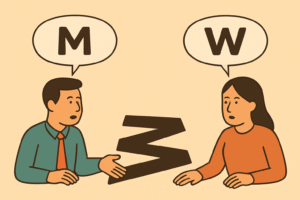We talk about this a lot but do not always do a good job of explaining why it is so important. I would argue not understanding this difference and developing this mindset can cause your whole transformation to stall.
So what do we mean when we say project vs product and why is it so critical?
Read below for my thoughts on the topic.
What’s the difference?
Commonly, projects have several differences from products, including:

Projects exist to deliver value by a set end date, whereas products are focused on continually delivering value to customers by solving their problems. Products will exist until they are obsolete and no longer needed, whereas projects deliver the project’s requirements.
Why does this matter?
From a delivery perspective, the two are heavily intertwined with multiple projects being delivered within a product’s lifetime and products being delivered within the context of projects. However, from a mindset perspective, they are quite different. In the world of complex systems we work in today, experimentation is key, which is why switching from a project to a product mindset for delivery is so critical today.
For example, the early delivery of value to customers in increments allows us to learn from the customer needs to guide development of future features. This is harder to do with a project mindset as the outcomes are fixed upfront.
Where to start?
Adoption of modern delivery practices such as Agile and DevOps will help drive a product mindset. However, if you are working within a project-centric environment, you will very quickly run into problems with how funding flows into product development. Gaining an understanding of how value flows to your customers through value stream mapping (a part of Xodiac’s Current State Insights service) is an excellent place to start in getting visibility into this.
A typical starting point I’ve seen is to create “mini-projects” for each quarter and funding these as supposed to funding larger projects. Over time the duration of these “mini-projects” is reduced until you are effectively funding the value stream and its products. Typically it is the organizational structure for accounting that drives the solution to this.
What is the difference between product management and project management?
Along with the other organizational change, you also need a different type of leadership to deliver products. This is an area I’ve seen many organizations trip up. Project managers, generally, do not make good product managers. Project managers have many diverse and highly valuable skills, and where delivery of a project is required, they are the right people to have in place doing the delivery. However, the two roles have fundamental differences and, as a consequence, their practitioners often have different mindsets. Some project managers will make this switch in thinking easier than others.
For a project manager, success comes from delivering on budget, in time to a defined scope. They do this by controlling the amount of change to the project.
For a product manager, success comes from maximizing value by delivering the minimum set of features that solves their customer’s problems. The scope varies as they learn from their stakeholders.
Understanding when you need which approach is crucial as you undergo digital transformation.
Conclusion
Hopefully, this has given you some insight into why a product approach is valuable. Here are a couple of questions for you to consider:
- Do you deliver value to your customers through a product or a project approach?
- Are both needed?




